Is Your Cookware Poisoning You?
Written by Tom Brimeyer | Posted in Healthy Living | 13 Comments
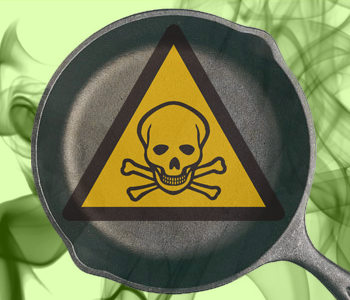 When it comes to your health, and the health of your thyroid, it’s the foods that you put into your body that provide the foundation for regulating your hormones, provide the necessary nutrients to help your cells produce adequate energy, and fuel every single process within your body.
When it comes to your health, and the health of your thyroid, it’s the foods that you put into your body that provide the foundation for regulating your hormones, provide the necessary nutrients to help your cells produce adequate energy, and fuel every single process within your body.
But, many people are ingesting more than just the foods they think they are eating. Many people are unknowingly ingesting toxins in their foods directly from their cookware. And research continues to show that these toxins are contributing to a number of very common and serious health problems today.
Does this mean that you need to go out and spend lots of money buying all new cookware?
Of course not.
But, sometimes the better cookware for your health is also better for your wallet.
Most of us primarily use one or two pots or pans regularly, so simply getting one or two inexpensive non-toxic ones can go a long way in protecting yourself and your family from chronic exposure to these common toxins.
Below, we’ll take a look at the common types of cookware you want to avoid, if possible, and why they are toxic to your health, followed by two safe types of cookware and how to test them to ensure that they are non-toxic and safe.
4 Types of Toxic Cookware to Avoid & Why
There are various types of cookware being sold today, mostly for their ability to resist corrosion and conduct heat. But far less attention has been given to the toxic effects that they can have on the human body.
Most of the different metals being used in cookware today are well know toxins that have been linked to a number of diseases from Alzheimer’s to even heart disease and cancer.
Aluminum Cookware
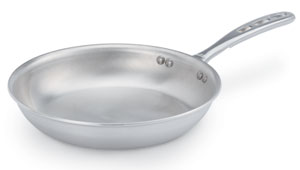 Aluminum is one source of cookware that is used because it is inexpensive and is a great heat conductor. But, aluminum is a very well recognized neurotoxin that is known to inhibit more than 200 biological processes within the human body.
Aluminum is one source of cookware that is used because it is inexpensive and is a great heat conductor. But, aluminum is a very well recognized neurotoxin that is known to inhibit more than 200 biological processes within the human body.
Cooking acidic foods or using salt in your cooking can leach aluminum out of your cookware and into your food, where it can easily make its way into your body.
Cast Iron
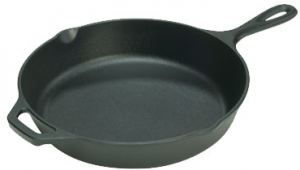 Most people don’t realize it, but cast iron is another very potentially toxic type of cookware. For starters, most cast iron cookware on the market is treated with soy oil which is very thyroid suppressive to begin with.
Most people don’t realize it, but cast iron is another very potentially toxic type of cookware. For starters, most cast iron cookware on the market is treated with soy oil which is very thyroid suppressive to begin with.
But few people realize the potential dangers of iron to their health. Studies have shown that stored iron in your body is the strongest indicator of heart disease, more so then cholesterol.
Body iron stores and presence of carotid atherosclerosis. Results from the Bruneck Study.
http://www.ncbi.nlm.nih.gov/pubmed/7918313In a logistic regression analysis adjusting for age, sex, and all major vascular risk markers, ferritin emerged as one of the strongest indicators of carotid artery disease in both sexes (40 to 59 years; odds ratio, 1.54 per 100 micrograms/L; P < .001).
Iron is known to promote lipid peroxidation, destroy vitamin E in your body, and feed estrogen, all which suppress your thyroid. Iron will also destroy vitamins directly in your food.
There is also quite a lot of research demonstrating iron’s role in both heart disease and cancer. Below is just one of many studies demonstrating this.
Putative role of dietary trace elements in coronary heart disease and cancer.
http://www.ncbi.nlm.nih.gov/pubmed/7881323
Epidemiological evidence linking measures of high iron nutritional status with both coronary heart disease (CHD) and cancer is accumulating…
Austenitic Stainless Steel
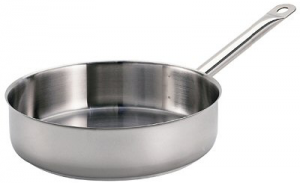 Stainless steel is another commonly used type of cookware that is generally thought to be safe. About 70% of stainless steel is austenitic, where nickel is added to prevent corrosion and pitting of the metal itself. While the nickel does help it to last longer, it also makes it more expensive and introduces a number of health risks.
Stainless steel is another commonly used type of cookware that is generally thought to be safe. About 70% of stainless steel is austenitic, where nickel is added to prevent corrosion and pitting of the metal itself. While the nickel does help it to last longer, it also makes it more expensive and introduces a number of health risks.
Austenitic stainless steel is typically labeled with either the old 18/8 or 18/10 designation or with the newer 300 Series designations based on the amount of chromium and nickel added: i.e. 301, 302, 304, etc.
However, nickel is more toxic than both iron and aluminum. It’s a very common allergen which is most evident by its use in jewelry, which commonly causes inflammation or a rash to form where the metal contacts the skin.
Nickel has also been linked directly to cancer.
Non-Stick (Teflon Coated) Cookware
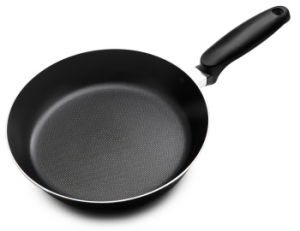 Teflon is the chemical non-stick coating that is commonly used with cookware today. Initial research was thought to have shown that Teflon was safe when heated to low temperatures; however more recent research has demonstrated otherwise.
Teflon is the chemical non-stick coating that is commonly used with cookware today. Initial research was thought to have shown that Teflon was safe when heated to low temperatures; however more recent research has demonstrated otherwise.
There is also a lot of controversy surrounding other non-stick variations, which are quite toxic and never approved for use in cookware, yet they have been found in cookware in detectable levels. These non-stick variations have been shown to cause cancer, disrupt the hormonal system, and be toxic to the liver and immune system.
As non-stick cookware ages and becomes worn from use, the risk of ingesting Teflon or its toxic byproducts increases drastically.
2 Types of Non-Toxic Cookware
When it comes to non-toxic cookware, there are a couple of great choices that you can’t go wrong with.
Pyrex Glass
Pyrex glass in general is always a great choice for baking as it’s durable, inexpensive, and non-toxic. However, it can’t be used stovetop.
Nickel-Free Stainless Steel
For cooking stovetop, there are certain kinds of stainless steel that are safe. One of the best non-toxic options is to use nickel-free stainless steel, which does not contain the toxic nickel component that most stainless steel contains.
The upside to this type of stainless steel is that it’s cheaper because nickel is expensive and increases the cost of the cookware. The downside is that the nickel helps make the cookware more resistant to corrosion, so nickel-free stainless steel cookware will be less corrosive resistant and therefore not last quite as long.
How to Choose the Right Stainless Steel
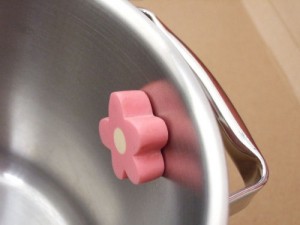 There’s a very simple way to determine if stainless steel cookware contains nickel or not. Stainless steel itself is magnetic, however, when nickel is added, it loses its magnetic properties.
There’s a very simple way to determine if stainless steel cookware contains nickel or not. Stainless steel itself is magnetic, however, when nickel is added, it loses its magnetic properties.
Simply testing cookware with a magnetic will tell you whether or not it’s safe. If the metal is magnetic and the magnet sticks firmly to it then it’s nickel-free and safe. If the metal is non-magnetic and the magnet does not stick to it, then this means that it contains nickel and should be avoided.












RTS
03. Aug, 2012
Tom, What about ceramic cookware? I just bought an OrGREENic Frying Pan. The ad says it is Eco friendly, Hard anodized, nontoxic, and PTFE free. What are your thoughts? I have nickel free aluminum and some food tends to stick sometimes. The green pan is super-slippery. When you have thyroid problems, you tend to cook every meal at home. It is important to get the right pans!
Tom Brimeyer
03. Aug, 2012
Ceramic is not quite so black and white so it’s difficult to say. The biggest problem with ceramic is that many have found lead and cadmium. But not all so it largely depends on the brand.
Lethal Lee
03. Aug, 2012
Ceramic cookware may contain Lead see….
http://www.nytimes.com/1990/12/12/garden/eating-well.html?pagewanted=3&src=pm
Susan
03. Aug, 2012
What about copper pans, they have a tin lining on the inside? what do you cook in? I have been using cast iron for over 30 years. cast iron is magnetic too but that is not good , right?
Susan Jennings
04. Aug, 2012
Is anodized aluminum safe?
Diana
04. Aug, 2012
Circulon Non-Anodized and not magnetic. Good non-stick ability. Glass lids.
I did the magnet test, it passed.
Whew.
Ginny
05. Aug, 2012
What about Le Creuset Enameled Cast Iron? I’ve cooked with it for 25 years a love it.
Irene
05. Aug, 2012
Hi Tom,
This is not related to the topic. I just have a question regarding my thyroid condition. I had my thyroid removed two years ago. According to the doctor, I had cancerous nodules. I am feeling tired after I eat a meal. Symptoms are sleepiness and tiredness. I consulted the endocrynologist and he did a glucose test. It was an OK level. What are the reasons for these symptoms? I didn’t feel these symptoms before.
Tom Brimeyer
06. Aug, 2012
Glucose tests won’t tell you much. Your body will increase stress hormones to convert muscle into sugar to keep blood sugar up, however, this is very inflammatory and thyroid suppressive.
Stephanie
06. Aug, 2012
Tom what if your magnet holds to the underside of the pan but does not hold to the cooking surface itself? Would this pan be safe to use?
Tom Brimeyer
06. Aug, 2012
That’s not good. Some stainless steel has copper or aluminum core. It should stick to the sides as well.
Garry
18. Dec, 2013
so what brands are safe and where can i get them?
Tom Brimeyer
20. Dec, 2013
Cookware changes so quickly these days that it’s difficult to recommend any one specific brand. Most brands will make certain sets nickle-free but not all. It’s best to contact manufacturers directly.